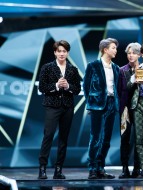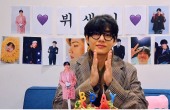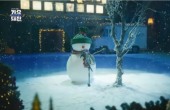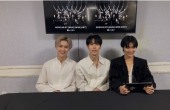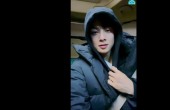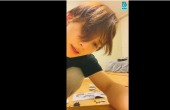Erwin Olaf: When fear becomes art
A young boy in a dark suit sits in an armchair, wearing leather gloves, gazing directly at the lens, in a Hitler-like imposing posture. In another, a commanding young girl is looking straight at the viewer, with three old prostitutes slumped by a dining table beside her, looking haggard and completely defeated.
Erwin Olaf's photos look as if they are cut from a movie. Each image is elaborately staged, highly detailed and polished. Through highly cinematic images, the Dutch photographer shows his own world existing only in his head.
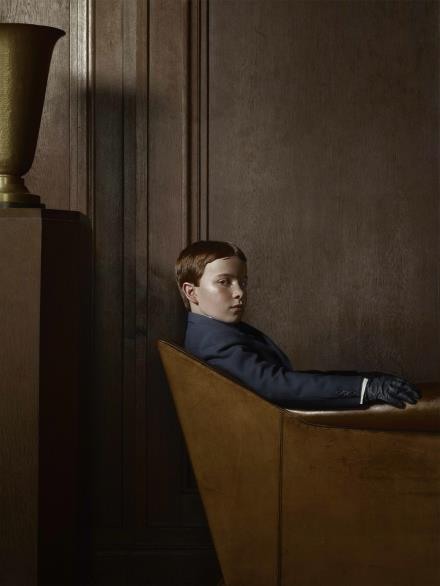 |
| 'Berlin, Portr-01', 2012, 90x120㎝, chromomeric print ⓒErwin Olaf |
"I don't like reality. If I want to face it, I can simply just walk out the door. I'd rather like to dream and create my own world," he said when asked why he works on perfectly staged photos. "Fantasizing is one of the rare things that human beings can do. We can close our eyes and make up our own world. It is a really unique experience."
He visited Seoul for the first time since 2012 for his solo exhibition "Berlin, Waiting & Royal Blood" that opened last Friday at the Gallery Kong in artsy Samcheong-dong in Seoul. The title of the exhibit is the combination of the names from three previous series of his.
The photo of the young boy is one of his "Berlin (2012-2013)" series -- his first city-themed work that he hopes to continue if he could manage to finance it.
"The Berlin series is slightly in between a nightmare and a dream. It is about being in a surreal and subconscious world and a clash between young and old," the artist said.
He doesn't say too much about his photos. Rather he prefers letting people guess and complete the story with their own version based on different personal experiences.
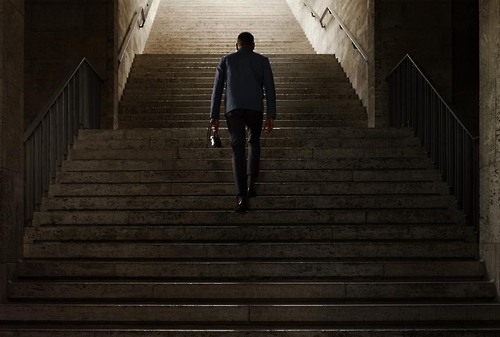 |
| 'Berlin, Olympia Stadion Westend, Selbstportr' 25th of April, 2012 |
"It would be very interesting for me to go all over the world and work with my fantasy. I will not only take pictures but also create my own nightmares and dreams."
Asked about any influence that Korea might have on his work, he said: "Before I say anything about Korea, I need to learn more about the culture which is still unfamiliar and unknown. Having said that, Korea seems to have a very rich and aesthetic culture and I find it quite different from what I experienced in other Asian countries. So I am very curious."
To evoke a sense of fear and insecurity in the "Berlin" series, the 57-year-old photographer brought in his personal story that he contends with emphysema, a lung disease that makes walking up endless stairs the last thing he wants to do.
In the famous "Olympia Stadion Westend, Self Portrait, 25th of April, 2012," a man -- the artist himself -- is going up the endless stairs of a stadium in Berlin that was built to host the 1936 Olympics. The series was his first attempt to shoot staged photos on location. He had taken them mostly in his studio in Amsterdam.
"When you have a lung disease, walking up stairs is very hard. The model had to be me because it was my nightmare that I am taking about," he said.
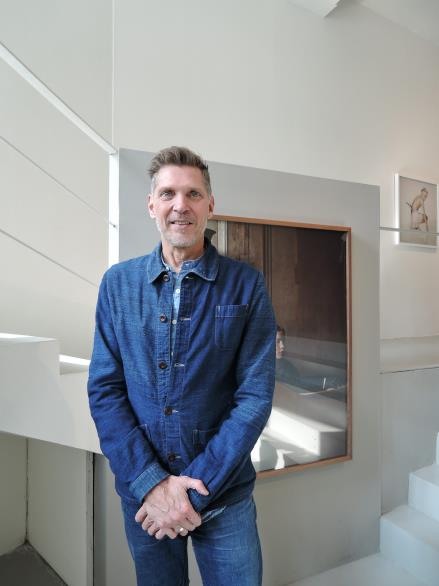 |
| (Yonhap) |
"Look at all the violence taking place around the world. What about those in the movies? We need to talk about the fact that people tend to idealize it without knowing it."
The photo exhibit runs through Dec. 11. (Yonhap)









